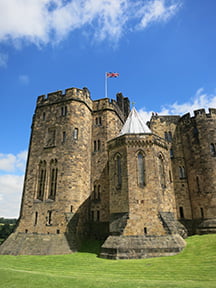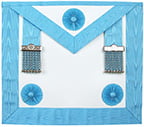Freemasonry is one of the world’s oldest and largest non-religious, non-political, fraternal and charitable organisations whose roots lie in the traditions of the medieval stonemasons who built our cathedrals and castles.
It is here that a number of the famous elements of Freemasonry find their roots. In the medieval era, stonemasons often travelled around to find work in different locations. To demonstrate their level of qualification, they would use grips, words and signs in order to distinguish themselves from unqualified builders.
In the medieval era, stonemasons wore aprons and gloves to protect themselves while working on shaping rough pieces of stone, but in today’s society Freemasons meet to build friendships and communities rather than cathedrals and castles. It uses building analogies to teach its members how to lead productive lives that benefit the communities that they live in.

Freemasonry is one of the world’s oldest fraternal organisations with around three million members. It is a centuries-old brotherhood of men from different religious, ethnic, social, and economic backgrounds. It requires each member to believe in God, while accepting that his fellow members may hold very different beliefs than his own. Freemasonry respects each man’s success and place in society while treating him as an equal. It encourages members to take the lessons learned in the lodge, such as tolerance, integrity, civility, and charity, and apply them outside the lodge for the betterment of themselves, their families, and their communities.
From its earliest days, freemasonry has been concerned with the care of orphans, the sick and the aged. This work continues today. In addition, large sums are given to national and local charities, as well as providing relief to other Grand Lodges following major natural disasters around the world.
Lodges
Freemasonry is organised in units called Lodges, with members being free to choose which lodge(s) they wish to be part of.
Lodge Meetings – What happens?
Lodge meetings are typically held in two parts. The first involves more administrative procedures, such as proposing and balloting for new members and receiving news about charitable fundraising. The second part focuses on ceremonies, such as the admittance of new members or the installation of the Master of the Lodge and his officers – a process made up of three degrees, each marked by a special ceremony.
The Three Degrees

When a person is initiated into Freemasonry, they complete the First Degree. At this point, they become an ‘Entered Apprentice’. The Entered Apprentice is the foundation of the Masonic system, and sets the stage for future Masonic work while the First Degree ceremony reminds us that all are equal – it is the responsibility of those that do well to look after those less fortunate.

Upon completion of the Second Degree, a member becomes a ‘Fellowcraft Freemason’. This encourages members to better themselves through education and focuses on self-development. In one sense the Fellowcraft Degree symbolizes the stage of adulthood and responsibility during a person’s life on earth. In this stage, his task is to acquire knowledge and apply it to the building of his character and improving the society of which he lives.

After this, the member will then undertake the Third Degree, on completion of which he becomes a Master Mason. This ceremony teaches him how to use life wisely and be remembered for the right reasons. . As the final and highest honour in Freemasonry, the Master Mason degree symbolizes man’s maturity through increased knowledge and wisdom. It is the culmination of all he has learned through the previous degrees.
As a Master Mason, a man is free to follow his own path in the craft and is entitled to the benefits of full membership. He can study in greater depth the philosophy that underlies our ceremonies and aspire to leadership positions in his lodge and greater Masonic community.
Further information
Further information on each of the three degrees and other aspects of freemasonry can be found at Solomon (ugle.org.uk) . (Registration may be necessary to view all content.)
Thinking of Becoming a Freemasons? Click Here